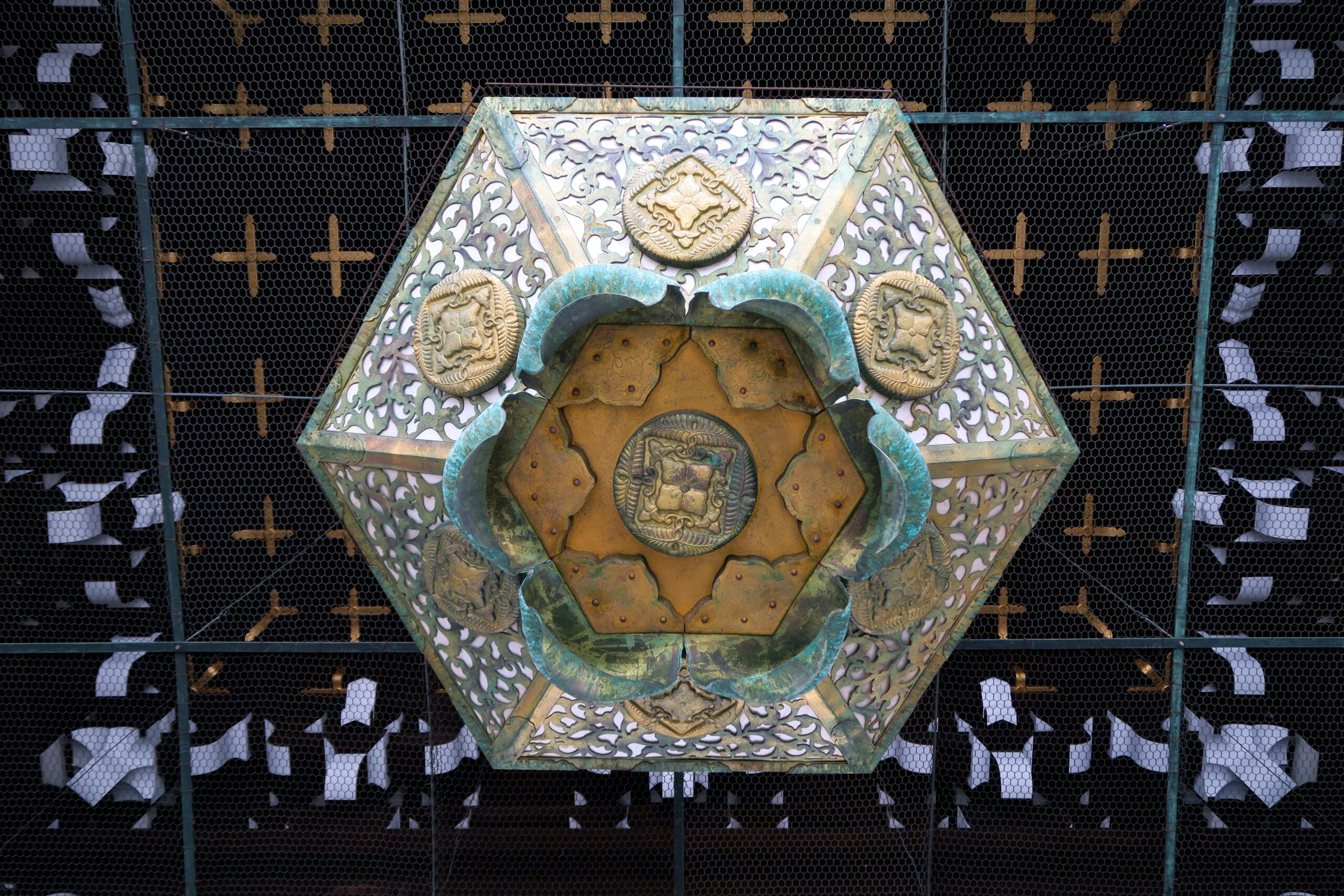A fifth of Japanese — about 25 million people — identify as practitioners of Jōdo Shinshū, the largest denomination of Buddhism in Japan. My family in Japan are all Jōdo Shinshū, also known as “Shin” Buddhism. I am currently here in Japan, and this weekend we will be performing the 13th memorial service for my wife’s grandmother’s death. This ceremony will be conducted by a Shin officiant, of course. I have participated in the funeral as well the memorials for the 1st, 3rd, 5th and 7th anniversaries. This will be the last one. Thus, I took this opportunity to explore the history of the sect, the life of its founder, and visited some of the important historical places in Kyoto linked to his life.
Shin Buddhism is part of the Mahayana tradition common in East Asia. It was founded by a monk named Shinran (1173 – 1263). Like most Kyoto monks of the time, he was brought up in the Tendai tradition, the oldest successful branch of Buddhism brought to Japan in 805 CE. At the age of 9 Shinran entered the monastery Shōren-in, located today in eastern Kyoto.
This temple complex has a nice central building that overlooks a well-maintained garden. Just a few minutes walk away is Chion-in, the headquarters of the Jōdo-shū, the predecessor of Shinran’s Shin sect. Chion-in was built near the end of Shinran’s life in 1234, but in a way it represents the beginning of Shinran’s impact on Buddhism in Japan. It was on the grounds of Chion-in that Shinran’s teacher Hōnen (1133–1212) started a reformist movement that some compare to Protestantism in the Christian world. Hōnen believed it was no longer possible to rely on your own efforts to achieve salvation, a key teaching of Siddartha Gautama the original Buddha. Hōnen preached that the only way people could attain nirvana in this lifetime was by chanting the nembutsu (南無阿弥陀= “na mu Amida Butsu”, pictured in a stone carving above) and truly believing in the grace of the Amida Buddha. No need to work your way up the ladder, no need for technical meditation practice, and no need for the scholarly gatekeepers at the monastery. Just pray non-stop and you can make it to the Pure Land.Shinran was a follower of Hōnen, and took the Pure Land tradition to another level, focusing on the need an “other” power. He has this very interesting quote:
If even a good man can be born in the Pure Land, how much more so a wicked man?
For Shinran it did not matter who you were or what you did. Only your devotion to the Amida Buddha mattered: only your faith. Shinran was exiled from Kyoto and spent much of his life travelling up and down Japan preaching this simplified and faith-based method of salvation.
If Pure Land Buddhism can be compared to Protestant Christianity, Shin Buddhism might be analogous to the Evangelical movement. 800 years later, in the mixing pot of the Japanese religious landscape, Shin Buddhism claims 20% of the population, more than any other Buddhist sect. Furthermore, Jōdo Shinshū is also one of the most common forms of Buddhism to be found in North America. There are 61 temples in the US, and 20 temples in Canada, including the local Buddhist center in my city of Kelowna. Shinran has had a lasting effect on Japan and the world.
Shinran’s bones are interred at Higashi Honganji, a massive temple complex just north of Kyoto Station, built 600 years after his death on the orders of Tokugawa Ieyasu, the shōgun responsible for uniting Japan and starting the peaceful Edo Period.
While at Higashi Honganji yesterday I was able to capture a snippet of a prayer ceremony, which you can listen to below:In my years of studying Eastern religions I never did get into the weeds of learning about the sub sects like Jōdo Shinshū. Knowing the lineage and general outlook of the founder, I feel I now have a new understanding of a certain portion of the Japanese, and their influence in my own country.
I am not religious by any means, but I am and have always been intrigued by the teachings of the Buddha. The original teaching of self reliance is what I find the most appealing (not a surprise for an atheist), which precludes me from subscribing to Jōdo Shinshū. I also see the benefits of mindful meditation, which is de-emphasized in the Pure Land tradition at the expense of the nembutsu. For myself, I think Zen is the most appealing branch. Not the koan heavy style of the Rinzai sect, but more like the meditative Sōtō school of Dogen. A few days ago, when I walked into the Dharma Hall of the headquarters of the Sōtō school, I had a near-religious experience. Take a look at the video below and imagine seeing this in real life.
I can certainly appreciate any philosophical or religious tradition that celebrates the contemplative power of art.
As always, all my photos from this Japan trip can be viewed on Flickr, including the various temples and shrines, plus a lot of other fun stuff.













